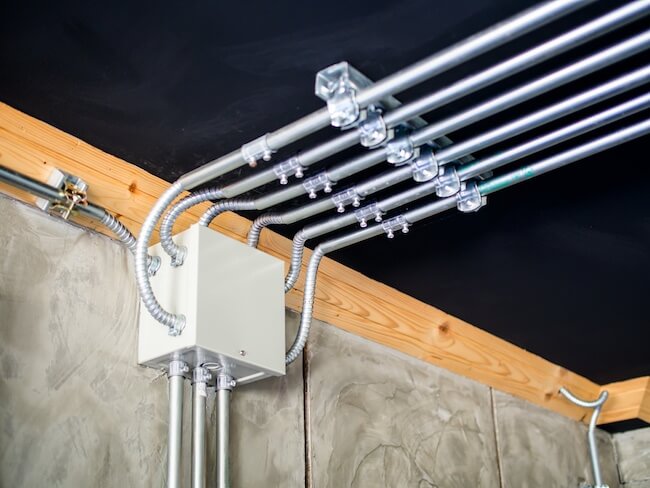8 Steps for Pulling Wire Through Conduit

Pulling wire through conduit can be tricky for electrical professionals. The material of the conduit along with its length can be critical for determining the best approach for getting a wire or cable through one end and out the other side of the conduit.
As a bundled cable manufacturer, we frequently speak with electricians to understand how they go about difficult tasks such as pulling wire runs through pipes in difficult to reach places (like the area above a ceiling or below the floor in a commercial high rise) and what we can do to make the process easier. Before you get started you want all of your conductors together ready to enter the conduit. This can be done by setting up multiple reel jacks and pay out trees with enough space for every conductor being pulled, or you can start with having all the cabled printed and bundled into a Quik-Pull for single pulling effort.
Here are 8 steps for pulling the wire through conduit.
Step 1: Check your conduit
Measure the OD of the cable and the OD of the conduit to make sure it will fit. Measure the conduit from end to end to know its length. If the conduit length is longer than your fish tape, get a longer fish tape in order to proceed.
Step 2: Use a pulling head or a pulling knot
Cut a small piece of wire AWG sized #16 to #12 depending on the size of the cable being pulled. Carefully separate the bundle into sides, place the wire in between and wrap in a figure-eight pattern a few times, then make a loop with the end. Tension draws the two sides together to tighten around the loop creating a small pulling knot.
Step 3: Use fish tape
When using a fish tape that is longer than the conduit, then you can insert your fish tape into the conduit and push it until it comes out at the conduit end. Connect fish tape to the cable’s pulling head or pulling knot, and pull your fish tape through the conduit as the cable is fed into the conduit off the reel.
Step 4: Use wire Lubricant
Always use a lubricant (we recommend polywater G water soluble). Pulling lube will allow the cable to glide through the conduit by reducing friction, especially good for the longer “Home Run” pulls.
Step 5 – Use pulling tool
The easiest way to pull the cable is to use an electrical or mechanical pulling tool to assist the pull into the conduit.
Step 6 – Pull the wire through the conduit
After feeding the wire off the reel into the conduit and pulled at the other end. The cable should go into the conduit smoothly, with an easy effort. Add more lubrication for curves as needed.
Step 7 – Ring, Tag, Terminate
Bring the cables to the termination points. Then ring, tag, and terminate conductors into the panels.
Step 8 – Clean up
Clean up the mess, debris and job site.
Read more about our product configurations and wire types in our cable bundles.

READY TO SAVE TIME & MONEY WITH BUNDLED CABLE?
Get a quote on our custom cable bundles today.


